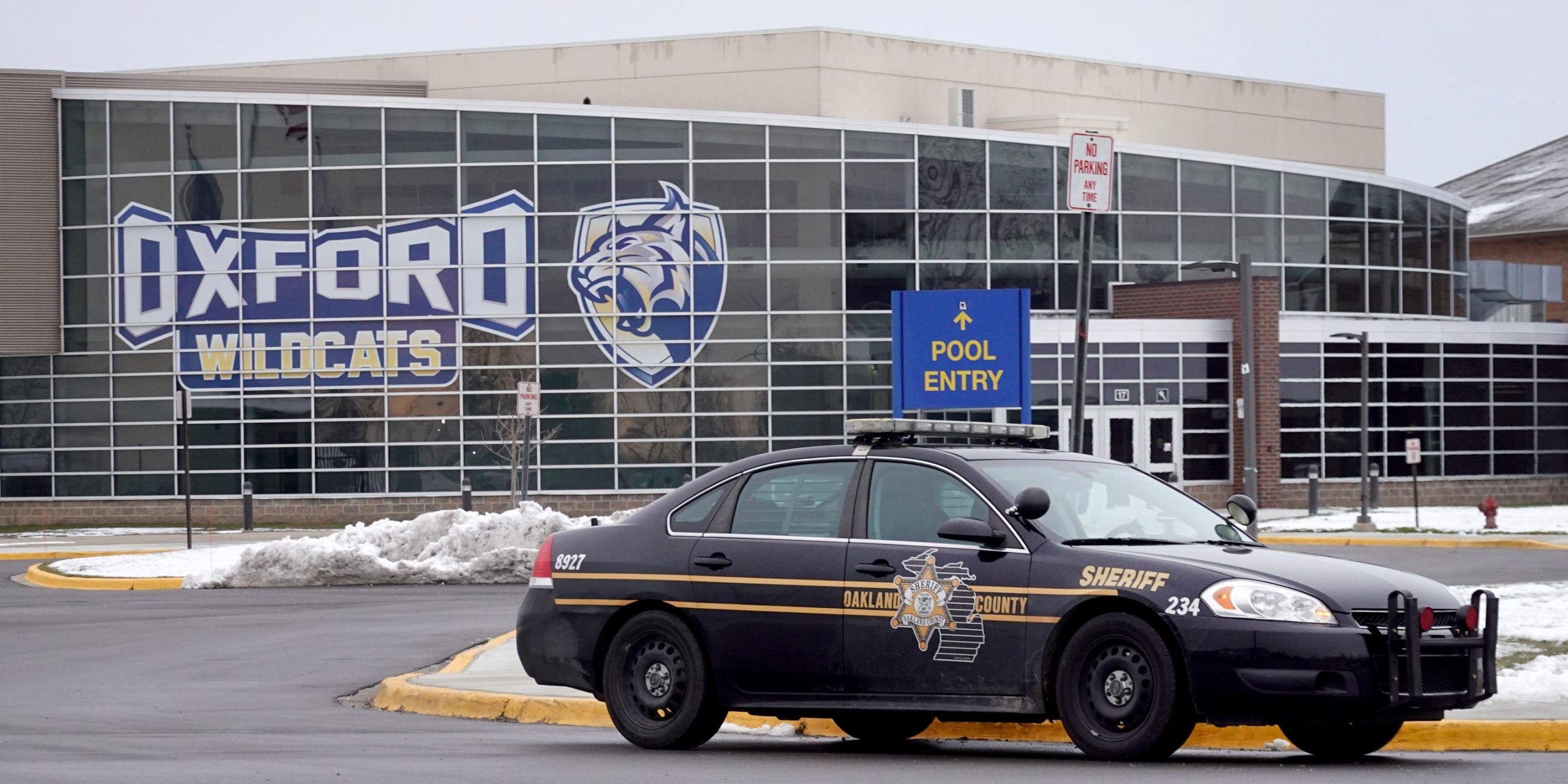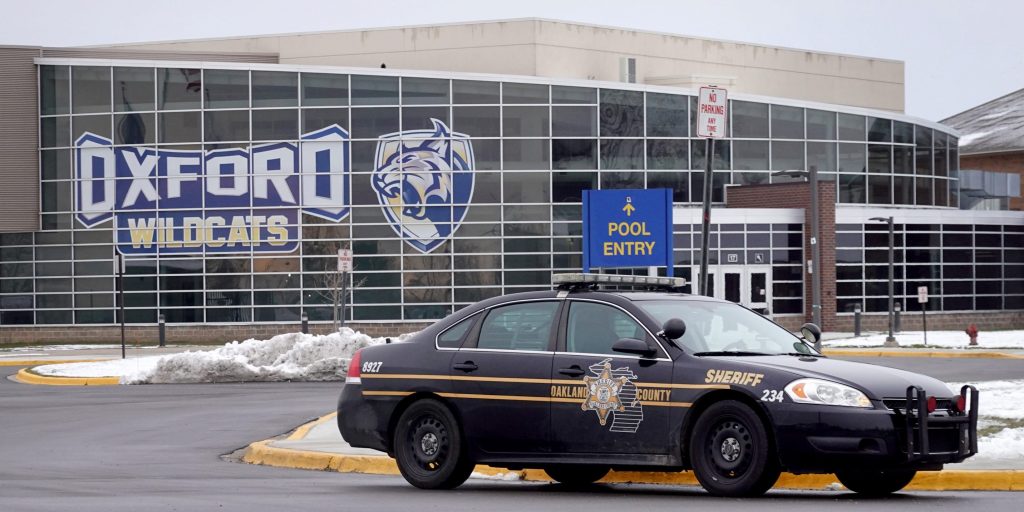
- A gunman opened fire at a high school on Tuesday, killing four students.
- Students across the country participate in lockdown drills in the event of school shootings.
- A lockdown expert said even if a gunman knows a school's protocol, drills still help save lives.
Almost 95% of public schools in America conduct active shooter drills. One expert told Insider while that means gunmen may know a school's lockdown protocol, the drills are still effective at saving lives.
Video taken inside Oxford High School during a shooting Tuesday that left four dead showed students sitting in a barricaded classroom, a technique that's a main part of lockdown drills.
Jaclyn Schildkraut, a professor at SUNY Oswego who studies mass murder and school shootings, told Insider that mass shooting events usually last an average of only five minutes, as it's typically only a matter of time until police arrive.
Since they don't have a lot of time in the building, gunmen are usually looking for easily accessible targets.
"What we do know is that there's never been anybody that's lost their life behind a locked door because the door locks didn't work," Schildkraut, who runs and studies lockdown drills in Syracuse public schools, said.
While lockdown drills differ from school to school, most generally advise students to lock or barricade the doors, turn off the lights, and hide in a place where they won't be seen or heard through windows.
"We know that the door lock is the number one life-saving device in an active shooter situation," Schildkraut said.
She said there hasn't been any mass shooting where a gunman has tried to open locked doors.
"They're not going to have time to breach the door. Oxford was over in three minutes," she said. "Even if that individual had gone through the training, from a practical perspective he wouldn't have had the time to breach the door."
However, Schildkraut was concerned about the safety of students who appeared in a viral video talking through a classroom door to someone they assumed could be the shooter before climbing out the window into a courtyard.
Schildkraut said it was good the students turned off the lights and many were sitting far from the door, but she was concerned the students were talking to someone on the other side.
Authorities said the individual the students were talking to was likely law enforcement rather than the gunman, but Schildkraut said students standing close to the door could have been hurt if a bullet managed to get through.
"Police have reported that there were rounds in some of the doors that he tried to shoot through," Schildkraut said.
If it had been the gunman outside, students also would have let him know they were inside the classroom.
"You just don't want to do anything that's going to call attention to your room. Make it look vacant and the person is going to just move on because they know that they have a very limited amount of time," she said. "They're looking for people they don't have to work for who are sort of out in the open."
Schildkraut said the students also took a risk escaping from the window, essentially leaving a secured area for an unsecured one. Though in this case there was a police officer on the other side of the courtyard.
Making a video could also be potentially dangerous, she said, because the person recording may not be fully aware of their surroundings.
While it's not likely a student would encounter a mass shooting, the more prepared they are, the more confident they'll feel if they are in that situation, Schildkraut said.
"I certainly wish that we lived in a world where these practices weren't necessary, but things like Oxford, things like Parkland, things like Santa Fe, all remind us that we do need to have them," she said. "Even though these are very rare episodic crimes, there's no way to predict where and when they're going to happen."
"It is better to have the tools and not need them than to need them and not have them."

